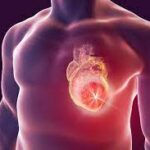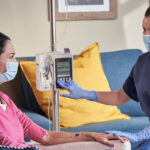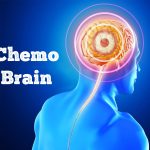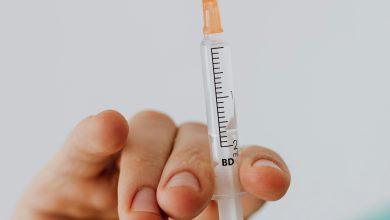Sudden Death After Chemotherapy
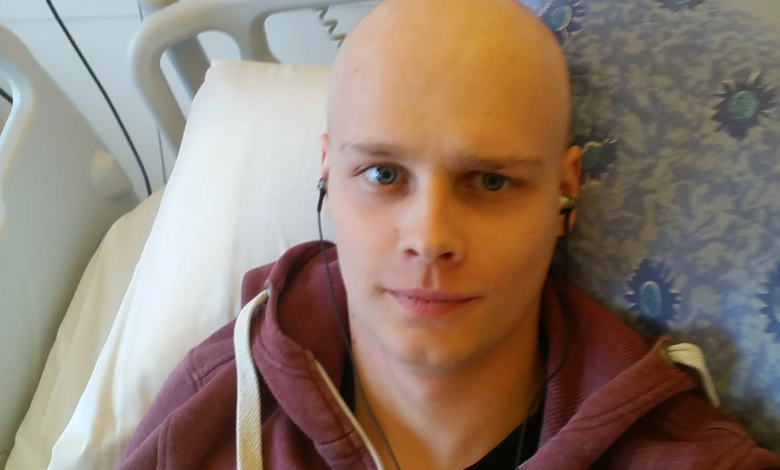
Chemotherapy is a powerful medical treatment used primarily in the management of cancer. It involves the administration of potent drugs that target and disrupt the growth of rapidly dividing cells, such as cancer cells. The goal of chemotherapy is to either eliminate cancerous cells entirely or slow down their growth, thereby reducing the size of tumors and preventing the spread of the disease to other parts of the body. While chemotherapy is most commonly associated with cancer treatment, it is also used for certain non-cancerous conditions, such as autoimmune disorders and certain types of infections.
During chemotherapy, drugs are usually administered through various methods, including oral ingestion, intravenous (IV) injection, or topical application, depending on the type and stage of the cancer being treated. These drugs work by interfering with the cell division process, either by damaging the DNA or by disrupting other essential processes needed for cell replication. However, because chemotherapy affects both cancerous and healthy rapidly dividing cells, it often leads to side effects such as hair loss, nausea, fatigue, and lowered immunity.
The specific chemotherapy regimen and duration vary based on the type of cancer, its stage, the patient’s overall health, and their individual response to the treatment. Often, chemotherapy is used in combination with other cancer treatments, such as surgery, radiation therapy, and targeted therapies, to create a comprehensive approach that increases the chances of successful remission or disease control. Despite its side effects, chemotherapy has played a crucial role in improving cancer survival rates and enhancing the quality of life for many patients by effectively targeting and managing this complex disease.
However, in some cases, there have been instances of sudden death occurring shortly after chemotherapy administration, leaving medical professionals and patients perplexed. This phenomenon, though rare, has raised concerns and sparked research into understanding the potential causes, risk factors, and preventive measures associated with sudden death after chemotherapy.
Causes of Sudden Death After Chemotherapy
Instances of sudden death occurring shortly after chemotherapy have led to intensive investigations to identify potential causes. While the exact mechanisms remain unclear, several factors have been proposed as contributors:
1. Cardiovascular Complications: Certain chemotherapy drugs, particularly those in the anthracycline class, can damage the heart muscle and impair its function, leading to conditions like cardiomyopathy or heart failure. Patients with pre-existing heart conditions are particularly vulnerable to such complications, and sudden cardiac events may occur.
2. Electrolyte Imbalances: Chemotherapy-induced nausea, vomiting, and diarrhea can disrupt the balance of electrolytes in the body, including potassium and magnesium. Severe imbalances in these electrolytes can trigger abnormal heart rhythms (arrhythmias), which might lead to sudden cardiac arrest.
3. Immune System Suppression: Chemotherapy can temporarily weaken the immune system, leaving patients susceptible to infections. Severe infections, especially if they become systemic, can lead to septic shock and potentially result in sudden death.
4. Thromboembolic Events: Chemotherapy increases the risk of blood clot formation (thrombosis). If a clot forms in a vital blood vessel, such as a pulmonary embolism (clot in the lung) or a deep vein thrombosis (clot in a deep vein), it can result in sudden death if not promptly addressed.
Signs of Dying From Chemo
Chemotherapy can weaken the body and make it more susceptible to certain risks. Here are some signs and considerations related to the potential risks of severe complications during chemotherapy:
1. Infections: Chemotherapy can weaken the immune system, making the body more vulnerable to infections. Signs of a severe infection may include high fever, chills, confusion, difficulty breathing, rapid heartbeat, and persistent cough. These symptoms should be taken seriously and medical attention sought promptly.
2. Extreme Fatigue: While fatigue is a common side effect of chemotherapy, an extreme and unrelenting fatigue that makes it difficult to perform even basic activities may indicate a need for medical evaluation. Severe fatigue can sometimes be related to complications like anemia or infections.
3. Shortness of Breath: Chemotherapy drugs can impact the lungs, leading to conditions like pneumonitis or fluid accumulation around the lungs (pleural effusion). Sudden or worsening shortness of breath, along with chest pain, could indicate a serious respiratory issue.
4. Heart-related Symptoms: Certain chemotherapy drugs, especially anthracyclines, can affect the heart’s function. Symptoms such as chest pain, irregular heartbeat, and sudden shortness of breath should be promptly assessed by a healthcare provider.
5. Bleeding and Bruising: Chemotherapy can reduce the number of platelets in the blood, leading to an increased risk of bleeding and bruising. Severe or persistent bleeding, such as from the gums or nose, or the appearance of unusual large bruises, should be addressed urgently.
6. Severe Nausea, Vomiting, and Diarrhea: While gastrointestinal side effects are common, severe and persistent symptoms can lead to dehydration and electrolyte imbalances. This can be dangerous and should be managed by a healthcare professional.
7. Mental Confusion or Altered Mental State: Chemotherapy-related complications, such as infections or metabolic imbalances, can sometimes affect the brain and lead to confusion, delirium, or altered mental states. These changes should be assessed by a medical professional.
8. Severe Pain: Uncontrolled or suddenly worsening pain should be addressed promptly. It could indicate complications related to the cancer itself, chemotherapy’s impact on the nervous system, or other health issues.
It’s important for patients undergoing chemotherapy to maintain open communication with their healthcare team. Regular appointments and discussions about symptoms and side effects can help identify and address any potential issues before they escalate. While the above signs may indicate complications, they do not necessarily imply imminent death. Seeking medical attention and following the guidance of healthcare professionals are crucial steps in managing any potential risks associated with chemotherapy.
Survival Rate Of Chemotherapy
The survival rate of chemotherapy varies widely depending on several factors, including the type of cancer being treated, the stage at which the cancer is diagnosed, the overall health of the patient, and the specific chemotherapy regimen used. As a result, survival rates can vary significantly between different types of cancers and individual patient situations, here are some survival rate examples for a few common cancers treated with chemotherapy. These numbers are approximate and can vary based on many factors:
1. Breast Cancer: The 5-year survival rate for breast cancer can range from around 90% for early-stage breast cancer to about 27% for advanced or metastatic breast cancer. Chemotherapy is commonly used in both early and advanced stages, often in combination with other treatments.
2. Colon Cancer: The 5-year survival rate for localized colon cancer is about 90%. For those with regional or distant metastases, the survival rate decreases to around 71% and 14%, respectively. Chemotherapy is frequently used in later stages to help control the disease.
3. Lung Cancer: Lung cancer survival rates vary greatly based on factors like the type of lung cancer (non-small cell vs. small cell) and the stage at diagnosis. The overall 5-year survival rate for lung cancer is around 21%. Chemotherapy is often a part of treatment for both types.
4. Lymphoma (Hodgkin and Non-Hodgkin): The 5-year survival rate for Hodgkin lymphoma is about 87%. Non-Hodgkin lymphoma has a more varied survival rate depending on the specific type and stage, ranging from 64% to 90% or more. Chemotherapy is a primary treatment for many types of lymphoma.
5. Leukemia: The survival rates for leukemia vary widely based on the specific type (acute lymphoblastic, acute myeloid, chronic lymphocytic, chronic myeloid, etc.) and the patient’s age. Some forms of leukemia have high 5-year survival rates, while others have lower rates. Chemotherapy is a cornerstone of leukemia treatment.
It’s important to emphasize that these survival rates are general statistics and do not reflect the outcome for any individual patient. Advances in medical research, personalized treatment plans, and supportive care have all contributed to improving the outcomes for cancer patients undergoing chemotherapy.
Risk Factors and Prevention
Several risk factors can contribute to the likelihood of sudden death after chemotherapy:
1. Pre-existing Health Conditions: Patients with pre-existing heart conditions, diabetes, or compromised organ function are at a higher risk of experiencing complications from chemotherapy.
2. Drug Selection and Dose: Certain chemotherapy drugs carry a higher risk of cardiotoxicity. Oncologists carefully assess a patient’s medical history and condition before selecting drugs and determining dosages.
3. Monitoring and Supportive Care: Rigorous monitoring of patients during and after chemotherapy is crucial. Regular assessments of cardiac function, electrolyte levels, and overall health can help identify early warning signs.
4. Patient Education: Educating patients about potential risks and symptoms is essential. Patients should be vigilant and seek immediate medical attention if they experience unusual symptoms like chest pain, shortness of breath, or palpitations.
Conclusion
Sudden death after chemotherapy is a rare but serious occurrence that demands careful attention from medical professionals, patients, and their families. Understanding the potential causes, risk factors, and preventive measures can help mitigate the risk and ensure the safety of cancer patients undergoing treatment. While the majority of patients benefit from chemotherapy’s life-saving effects, ongoing research and advancements are essential to refine treatment protocols and minimize the potential for adverse events, ultimately improving the overall quality of care for cancer patients around the world.

